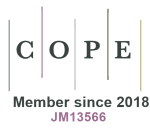Downloads
How to Cite
Motta, D., Ferrero, A., Riposio, C., Ellena, S., & Boero, R. (2017). Use of malnutrition inflammation score in hemodialysis patients by hemodialysis nurses. Giornale Di Clinica Nefrologica E Dialisi, 29(4), 253–258. https://doi.org/10.33393/gcnd.2017.693
Issue
Section
Original articles
Statistics
- Abstract views - 984 times
- PDF (Italiano) downloads - 1127 times
Sign up
Browse
Most popular articles in the last 30 days
-
489
-
462
-
378
-
250
-
227










